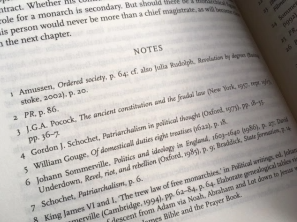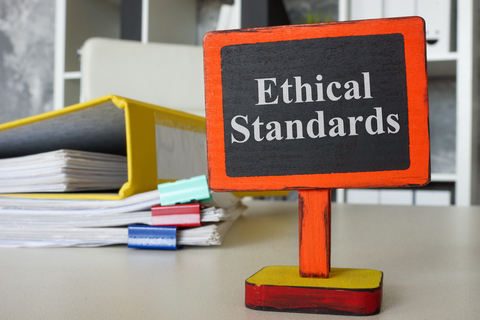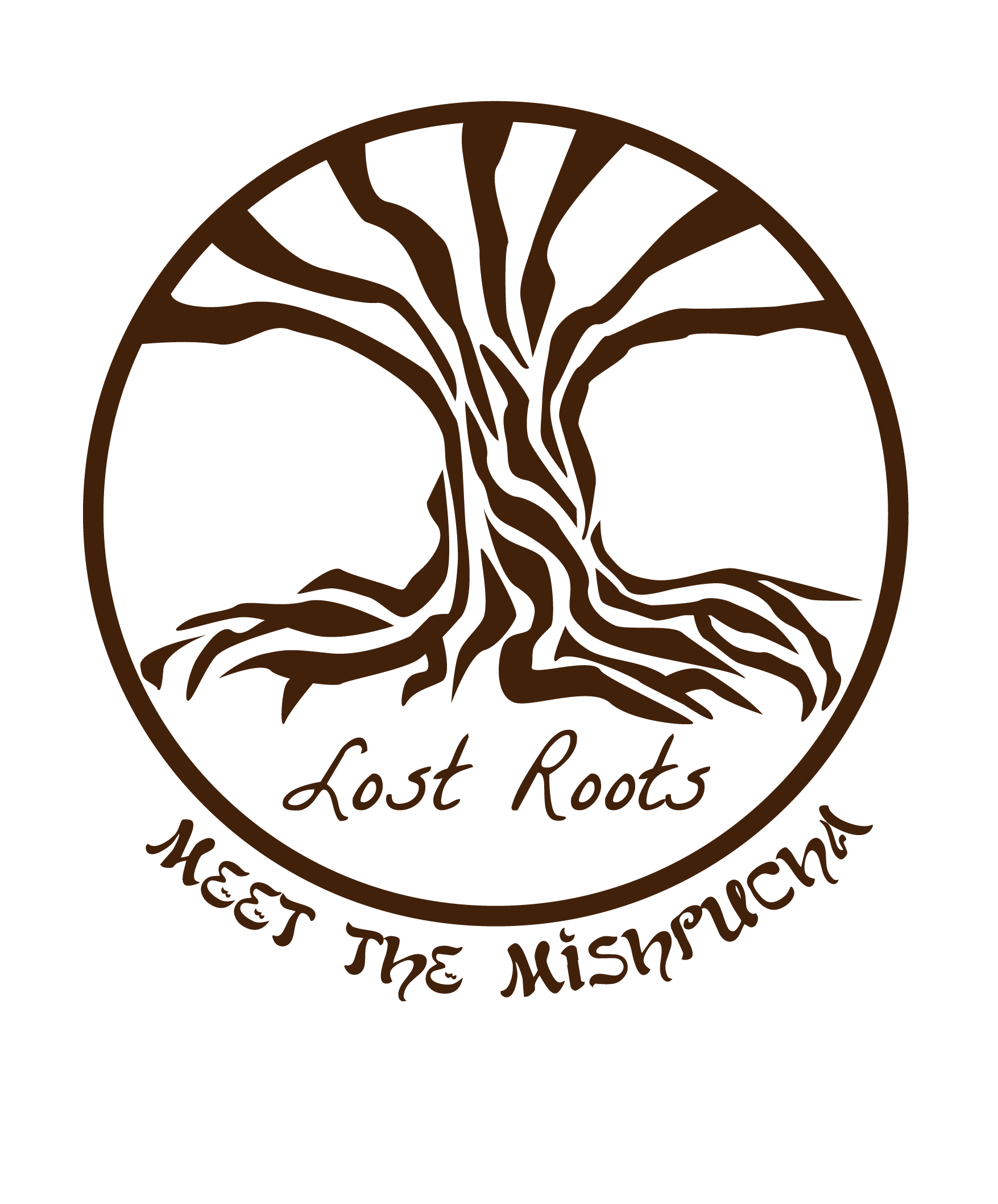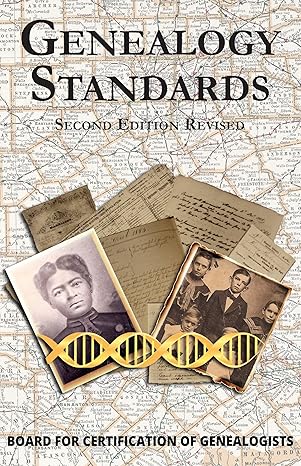Professional Genealogy Standards
Once you have decided to hire a professional genealogist, you will probably have any number of questions. Most likely, you may wish to have a clearer understanding of what you might expect the genealogist to be able to find. You will probably also want to understand that person’s policies and procedures. Most importantly, however, you will want to be reassured that the person you are hiring will produce research that is reliable and conforms to industry standards.
Like all disciplines, genealogy relies on a set of conventions to ensure our output meets the highest standards. These conventions cover everything from research techniques to technical writing specifications and everything in between. By choosing a professional genealogist who follows the standards and best practices set out by the industry, you are ensuring that you are getting research results which are as accurate, reliable, and high-quality as possible.
Lost Roots Family History commits to rigorously following all professional standards of the genealogy industry.
The Genealogical Standards of Proof
To ensure the accuracy of our research conclusions, Lost Roots Family History follows the Genealogical Proof Standards (GPS). This set of standards involves five distinct elements. First, I perform what genealogical professional boards term “reasonably exhaustive” research, examining all evidence that might answer a question or provide relevant information. Second, I provide complete, accurate citations to the source of each piece of information. Third, I critically evaluate all sources and evidence I use. Fourth, I resolve any information conflicts in the evidence I collect. Finally, I provide soundly researched, coherently written conclusions based on the strongest evidence.
The genealogy standards dictate collecting all relevant sources of information (“reasonably exhaustive research”). While “reasonably exhaustive” is subjective, the Board for the Certification of Genealogists defines it as using “all sources and information items that competent genealogists would use to support the conclusion.” Although this somewhat circular definition is also subjective, it does offer guidance for the delimitation of research.
Importantly, the Genealogical Proof Standards require that I critically evaluate all sources of information. For each source I use, I compile information to understand how and why it was created, how it was used, who provided the information, and the full historical context of the document. When primary sources give conflicting information, this type of contextual analysis allows me to evaluate which is most likely to be correct.
Following the Genealogical Proof Standards and other professional genealogy practices ensures that my research conclusions are as accurate as possible. However, keep in mind that as in any field, it is neither possible nor desirable to arrive at conclusions with 100% certainty. In fact, keeping open the possibility that new evidence might change our conclusions is actually a strength, not a weakness. The open-ended process of continual refinement, directly modeled on the scientific method, is what allows professional genealogists to reach the most solid possible evidence-based conclusions.
Other Genealogy Standards
The Genealogical Proof Standards form the core of the professional standards of genealogy. However, there are many additional standards beyond the Standards of Proof. The Board for the Certification of Genealogists has established a set of 90 professional standards (https://bcgcertification.org/ethics-standards/) which guide all aspects of the conduct and research output of professional genealogists.
Documentation
 Professional genealogy uses footnote citations to document where information came from. These citations are similar to the use of footnote citations common to college, graduate school, and professional academia, although they are adapted to fit the purposes of genealogy. In short, all information other than common knowledge must be cited, and citations should be in-depth and should fully describe the item where the information comes from. Using documentation in this way allows both genealogists and readers to determine where genealogists received information. It also allows them to identify the basis for genealogical conclusions. Complete footnote citations allow readers to locate sources, evaluate their quality, and verify that researchers accurately represented the information in sources they used.
Professional genealogy uses footnote citations to document where information came from. These citations are similar to the use of footnote citations common to college, graduate school, and professional academia, although they are adapted to fit the purposes of genealogy. In short, all information other than common knowledge must be cited, and citations should be in-depth and should fully describe the item where the information comes from. Using documentation in this way allows both genealogists and readers to determine where genealogists received information. It also allows them to identify the basis for genealogical conclusions. Complete footnote citations allow readers to locate sources, evaluate their quality, and verify that researchers accurately represented the information in sources they used.
Research
 First, professional genealogy standards dictate following a specific plan to avoid researching aimlessly. Standard genealogy practice is to follow a specific research question, narrow enough to be limited yet broad enough to be interesting. Within these guidelines, a wide variety of project scope is possible. A relatively narrow example could be to determine if two specific people are related to one another, or to identify the exact relationship between two people known via genetic testing to be related. By contrast, a broader example could be to research the history of a specific family, within predetermined constraints. For example, where did the family originate before migrating to the United States? Which towns did they live in? What were their occupations? Did the family migrate within Europe before coming to America?
First, professional genealogy standards dictate following a specific plan to avoid researching aimlessly. Standard genealogy practice is to follow a specific research question, narrow enough to be limited yet broad enough to be interesting. Within these guidelines, a wide variety of project scope is possible. A relatively narrow example could be to determine if two specific people are related to one another, or to identify the exact relationship between two people known via genetic testing to be related. By contrast, a broader example could be to research the history of a specific family, within predetermined constraints. For example, where did the family originate before migrating to the United States? Which towns did they live in? What were their occupations? Did the family migrate within Europe before coming to America?
In addition to overall research delineation, genealogy standards also govern specific research behaviors. First and foremost, professional standards dictate that genealogists rely as much as possible on primary, contemporaneous sources. Sources which were written down close to the events they describe are much more likely to be accurate than those written down years or decades later. Similarly, original sources of information, informed by people with first-hand knowledge of the events they describe, are much more likely to be accurate than second- or thirdhand knowledge or secondary sources which describe, summarize, analyze, or translate primary sources.
Whatever source is being used, whether primary or secondary, professional genealogy standards dictate that genealogists thoroughly analyze it. What is the document’s purpose? How reliable is the document itself, and how reliable is the informer (the person who provided the information)? Are there any internal contradictions within the source? How well does the information in the source adhere to information in other known, trusted sources? Keep an open mind and be able to make a determination when primary sources are wrong.
Crucially, genealogists are ethically bound to accurately represent the sources they describe. In the exact words of the Board, “Genealogists do not trim, tailor, slight, or ignore potentially relevant evidence to fit a bias or preconception, to harmonize with other evidence, or for any other reason.”
Other Standards
 In addition to technical standards for writing (for example, using correct grammar and spelling), genealogy standards establish procedural safeguards for the avoidance of plagiarism. Genealogists must never take credit for other people’s words or ideas, even accidentally. As professional genealogists, we follow rigorous standards and exacting procedures to ensure that all quotations are rigorously documented. Importantly, plagiarism does not only cover direct quotes. As professional academics, genealogists take the same safeguards with all information used, even when paraphrased.
In addition to technical standards for writing (for example, using correct grammar and spelling), genealogy standards establish procedural safeguards for the avoidance of plagiarism. Genealogists must never take credit for other people’s words or ideas, even accidentally. As professional genealogists, we follow rigorous standards and exacting procedures to ensure that all quotations are rigorously documented. Importantly, plagiarism does not only cover direct quotes. As professional academics, genealogists take the same safeguards with all information used, even when paraphrased.
The genealogy standards also include various technical standards, as well as standards for lectures and instructors. Finally, while there are no formal requirements for continuing education, the genealogy standards include a commitment to regularly engage in formal and informal education to brush up on techniques. Keeping up to date with professional developments and remaining apprised of new research techniques are important parts of professional genealogists’ code of conduct.
Genealogists’ Code of Ethics
 Perhaps the most important aspect of genealogy standards, the genealogists’ code of ethics ensures that genealogy follows rigorous ethical guidelines:
Perhaps the most important aspect of genealogy standards, the genealogists’ code of ethics ensures that genealogy follows rigorous ethical guidelines:
· Never falsify or embellish fact, or present factual information beyond what sources demonstrate
· Never alter quotes or use them misleadingly
· Maintain 100% honesty and transparency when describing services, qualifications, skills, and fees
· Respect the privacy of living people and non-public information
· Only accept projects you are qualified to take on, and only after clearly explaining fees and scope of project
· If billing for time, do not deliberately replicate work already done by the client or by another genealogist without good reason
· If billing for time, return any advance payment more than the actual cost of billable hours actually spent
My Promise to You
Lost Roots Family History commits to rigorously following the highest professional standards of the industry. In every interaction, I commit myself to ethical, honest behavior; academically rigorous research; and fair, transparent practices.

